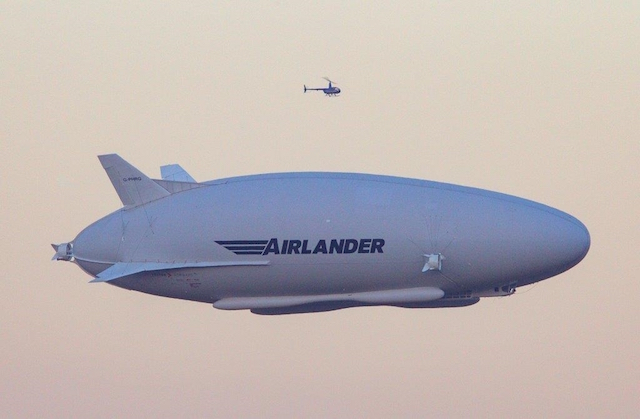Hybrid Air Vehicles has confirmed that a mooring cable attached to the Airlander 10 hit a power line shortly before the airship crash landed at the end of its second test flight on 24 August.
However, in a statement issued on 25 August, the UK-based developer denies that the incident damaged the aircraft or contributed to the heavy landing, which partially destroyed the front of the gondola.
The airship had carried out a 1h 40min flight on 24 August, during which it completed "all the planned tasks" before returning to its Cardington, Bedfordshire base to land, HAV says.
YouTube/Operline RU
"The Airlander experienced a heavy landing and the front of the flight deck has sustained some damage which is currently being assessed," the company said in an earlier statement on 24 August. "Both pilots and the ground crew are safe and well and the aircraft is secured and stable at its normal mooring location.
"Hybrid Air Vehicles runs a robust set of procedures for flight test activities and investigation of issues. We will be running through these in the days ahead as we continue the development of the Airlander aircraft. Further updates will follow in due course."
A YouTube video appears to show the aircraft dipping at an angle of about 30 degrees for about 12s as it approached Cardington before gently hitting the ground. Images on social media also show extensive damage to the cockpit.

Hybrid Air Vehicles
The incident came a week after the Airlander made its maiden flight, on 17 August. That flight lasted approximately 15min.
HAV has spent the past three years redesigning the Airlander for commercial certification after its previous guise as the Hav-304 for the US Army’s Northrop Grumman-led long-endurance, multi-intelligence vehicle programme, which was cancelled as part of budget cuts in 2013. The prototype, which had been designed in the UK, was returned to its developers.
HAV says the Airlander 10 – which is powered by four 350hp (257kW) Centurion engines and designed to fill roles such as sightseeing, cargo transport and surveillance – incorporates “over 100 changes since the Hav-304, so [is] a very different aircraft”.
Source: FlightGlobal.com



















